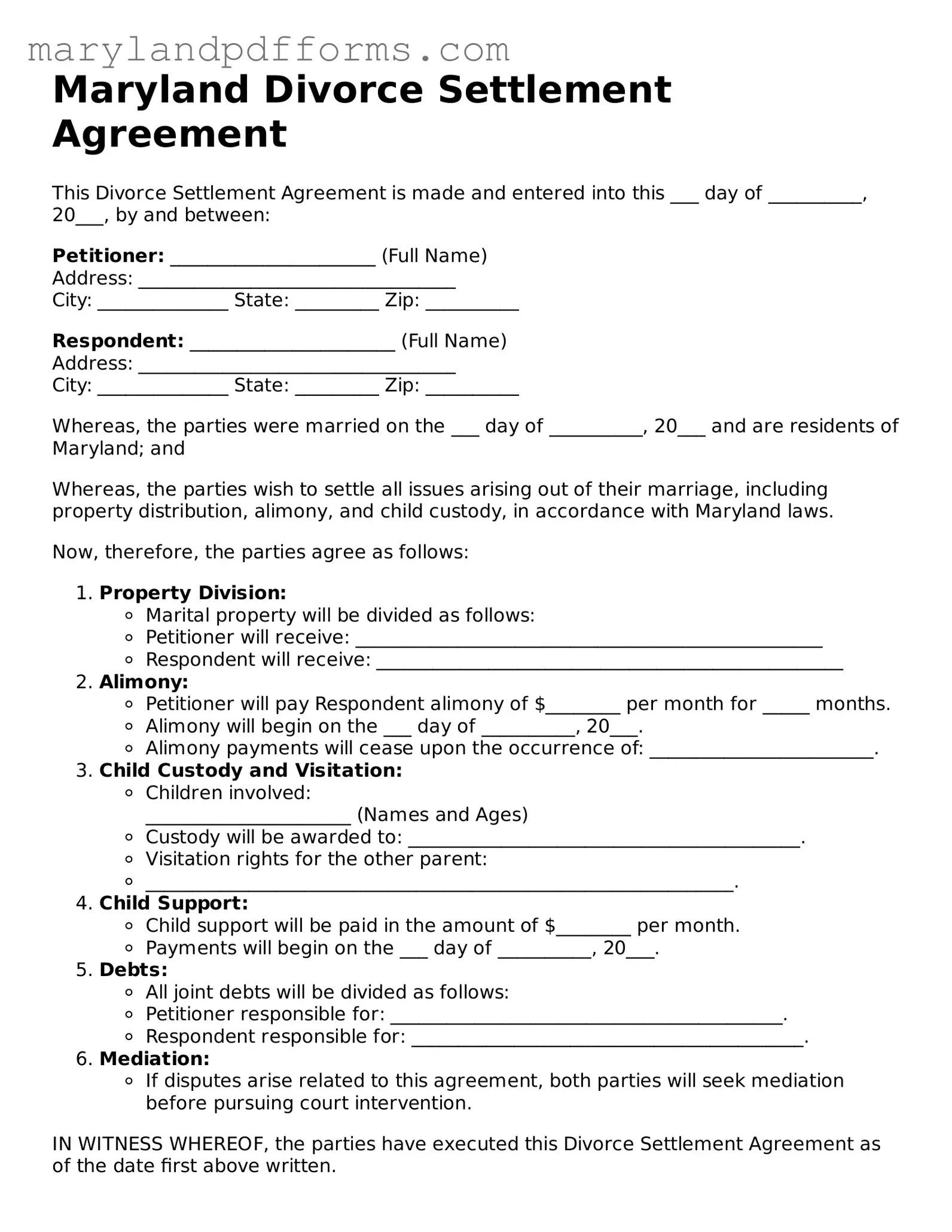The Maryland Divorce Settlement Agreement form is a legal document that outlines the terms of a divorce between two parties. It typically covers issues such as the division of assets, child custody, child support, alimony, and any other relevant matters. This agreement is crucial as it helps both parties reach a mutual understanding and can simplify the divorce process.
Both spouses involved in the divorce should complete the Maryland Divorce Settlement Agreement form. It is essential for couples who have decided to separate amicably and want to document their agreements regarding the dissolution of their marriage. The form is especially important when children are involved, as it addresses custody and support issues.
Filling out the form involves several steps:
-
Gather all necessary information about your assets, debts, and any children involved.
-
Clearly outline the terms of your agreement regarding property division, custody, and support.
-
Be honest and thorough to avoid future disputes.
-
Both parties should review the agreement to ensure mutual understanding and consent.
-
Sign the form in the presence of a notary public, if required.
While it is not legally required to have a lawyer when filling out the Maryland Divorce Settlement Agreement form, seeking legal advice is highly recommended. A lawyer can provide guidance on your rights and responsibilities, ensuring that the agreement is fair and legally sound. This can prevent potential issues in the future.
What happens if we cannot agree on the terms?
If both parties cannot reach an agreement, it may be necessary to pursue mediation or, in some cases, go to court. Mediation involves a neutral third party who helps facilitate discussions and negotiations. If mediation fails, a judge will ultimately decide the terms of the divorce, which may not align with either party’s wishes.
Can the Divorce Settlement Agreement be modified later?
Yes, the Divorce Settlement Agreement can be modified after it has been finalized, but this typically requires both parties' consent. If circumstances change significantly, such as a change in income or living situation, one party may petition the court for a modification. It’s essential to document any changes formally to ensure they are enforceable.
Once completed, the Maryland Divorce Settlement Agreement form should be submitted to the appropriate family court in the county where the divorce is filed. It is advisable to keep copies for personal records. Depending on the court’s requirements, additional documents may need to be filed alongside the agreement.
What if my spouse refuses to sign the agreement?
If your spouse refuses to sign the Divorce Settlement Agreement, it may complicate the process. You might consider mediation to facilitate discussions. If that doesn’t work, legal action may be necessary to resolve disputes. Courts can intervene to ensure a fair outcome, but this route can be time-consuming and emotionally taxing.
